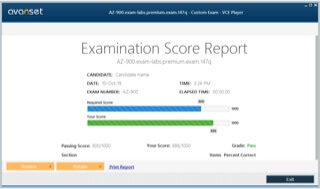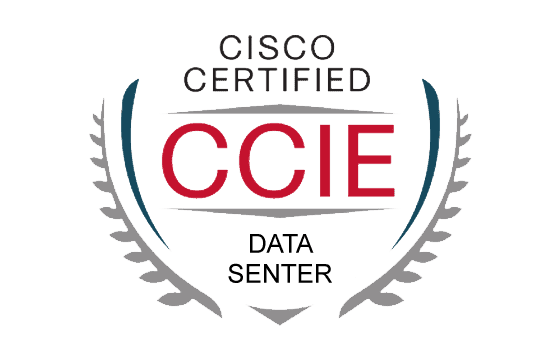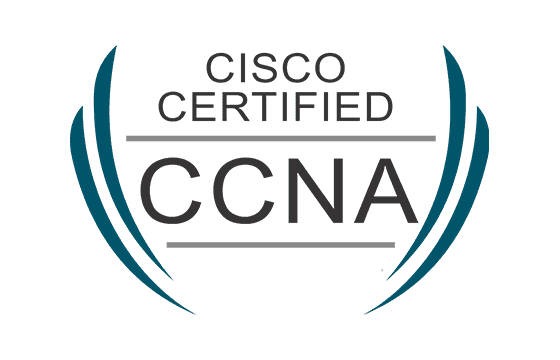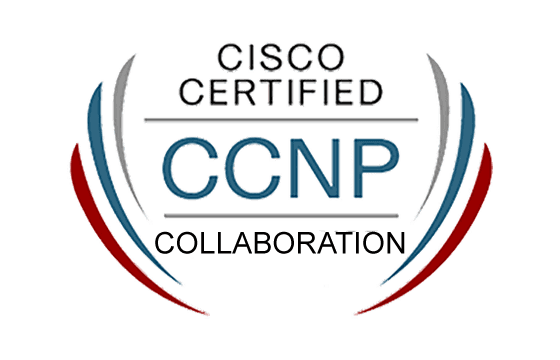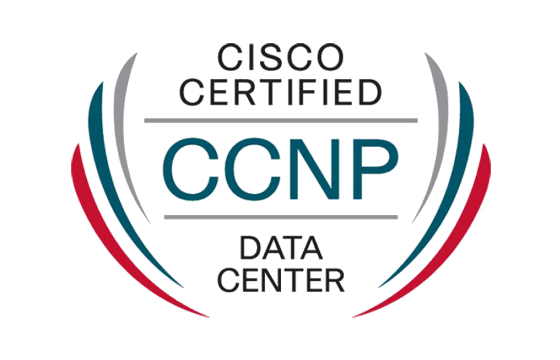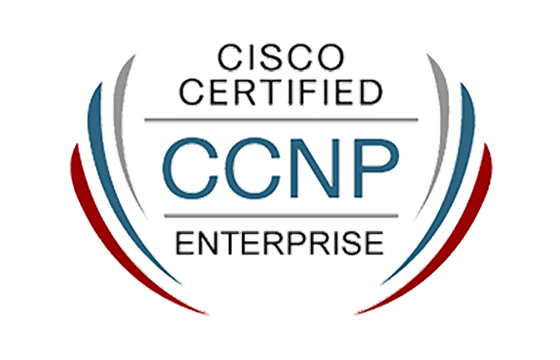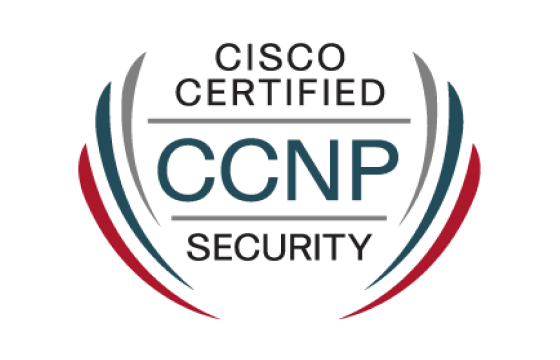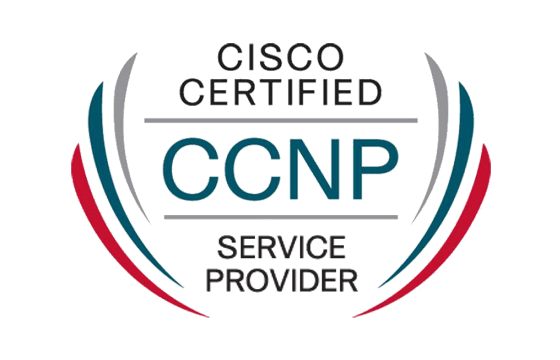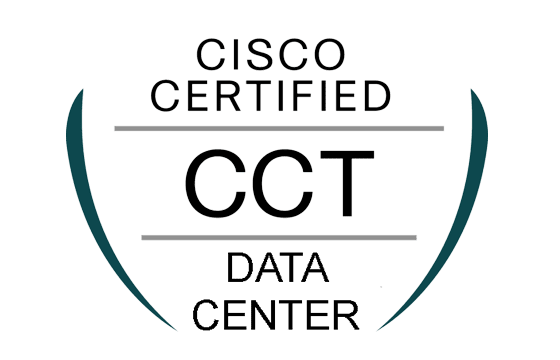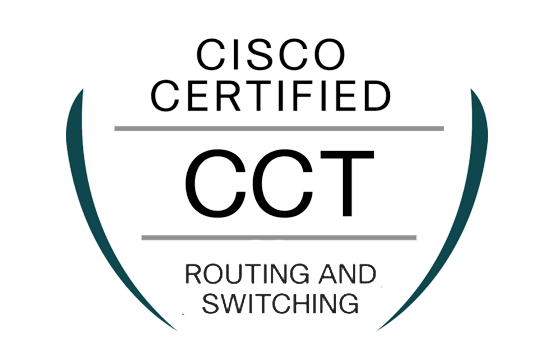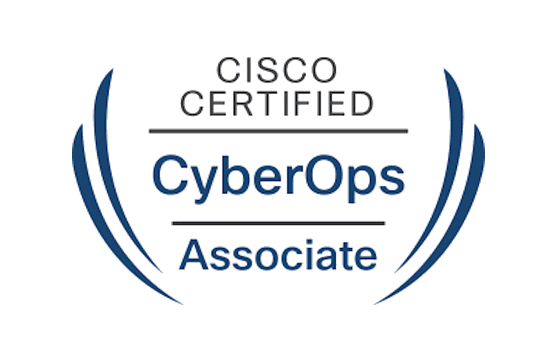Pass Your Cisco 350-018 Exam Easy!
Cisco 350-018 Exam Questions & Answers, Accurate & Verified By IT Experts
Instant Download, Free Fast Updates, 99.6% Pass Rate
Archived VCE files
| File | Votes | Size | Date |
|---|---|---|---|
File Cisco.Braindumps.350-018.v2015-03-11.by.Loy.602q.vce |
Votes 298 |
Size 6.12 MB |
Date Mar 11, 2015 |
File Cisco.Certkey.350-018.v2014-06-17.by.Judy.80q.vce |
Votes 3 |
Size 724.95 KB |
Date Jul 17, 2014 |
File Cisco.Certkey.350-018.v2014-06-14.by.Clint.100q.vce |
Votes 13 |
Size 749.3 KB |
Date Jun 14, 2014 |
File Cisco.Testkings.350-018.v2013-08-02.by.Spike.257q.vce |
Votes 29 |
Size 1.95 MB |
Date Aug 05, 2013 |
File Cisco.Passguide.350-018.v2013-06-15.by.Nathan.253q.vce |
Votes 11 |
Size 1.64 MB |
Date Jun 17, 2013 |
File Cisco.Pass4Sure.350-018.v2013-01-08.by.Nathan.186q.vce |
Votes 1 |
Size 1.33 MB |
Date Jan 09, 2013 |
File Cisco.ActualTest.350-018.v2012-02-10.by.Furqan.560q.vce |
Votes 1 |
Size 5.24 MB |
Date Feb 12, 2012 |
File Cisco.BrainDump.350-018.v2011-11-16.by.SUMITandOAVEZ.167q.vce |
Votes 1 |
Size 989.6 KB |
Date Nov 16, 2011 |
Cisco 350-018 Practice Test Questions, Exam Dumps
Cisco 350-018 (CCIE Security Written) exam dumps vce, practice test questions, study guide & video training course to study and pass quickly and easily. Cisco 350-018 CCIE Security Written exam dumps & practice test questions and answers. You need avanset vce exam simulator in order to study the Cisco 350-018 certification exam dumps & Cisco 350-018 practice test questions in vce format.
A Comprehensive Introduction to the Cisco 350-018 Exam
The Cisco Certified Internetwork Expert, or CCIE, certification is globally recognized as one of the most prestigious credentials in the information technology industry. Specifically, the CCIE Security track validates an individual's expert-level skills in network security. Achieving this certification demonstrates a deep, theoretical understanding and a practical, hands-on mastery of complex security technologies and solutions. It signifies that the professional can design, implement, deploy, configure, maintain, and troubleshoot intricate enterprise network security infrastructure.
The journey to certification is rigorous, demanding dedication and extensive knowledge, making it a benchmark for excellence among security professionals. The CCIE Security certification journey historically involved two major milestones: a written qualification exam and a hands-on lab exam. The written portion, such as the 350-018 Exam, served as the initial gate, ensuring candidates possessed the requisite breadth of knowledge across a wide array of security topics. Passing this exam was a prerequisite for attempting the grueling eight-hour lab exam, which tests practical application and problem-solving skills under intense pressure. This two-step process ensures that only the most qualified and knowledgeable individuals earn the coveted CCIE Security designation, maintaining its high standards and industry value.
Earning this certification opens doors to senior and principal-level roles within organizations. Certified experts are often tasked with protecting an organization's most critical assets from a constantly evolving landscape of cyber threats. They are the go-to specialists for creating robust security policies, deploying next-generation security appliances, and responding to complex security incidents. The CCIE Security credential is not just a test of knowledge but a testament to a professional's ability to handle the immense responsibility of securing modern digital enterprises. The 350-018 Exam was a critical first step on this advanced career path.
The Role of the 350-018 Exam as the Written Qualifier
The 350-018 Exam was specifically designed to be the qualifying written examination for the CCIE Security track. Its primary purpose was to assess a candidate's grasp of the core concepts and advanced theories that underpin the entire field of network security. This exam was not about memorizing commands but about understanding the "why" behind security architectures and protocols. It covered a vast blueprint of topics, ensuring that any professional who passed it had a comprehensive and well-rounded foundation before moving on to the practical lab portion of the certification. Serving as a filter, the 350-018 Exam ensured that candidates had the necessary theoretical knowledge to succeed in the lab environment. The lab exam demands quick and accurate troubleshooting and configuration, which is only possible with a solid understanding of the underlying principles.
By passing the 350-018 Exam, candidates proved they were ready for the next challenge. The exam's difficulty and breadth were calibrated to reflect the high standards of the CCIE program, setting a clear benchmark for what was expected of an expert-level security professional. The structure of the 350-018 Exam included various question formats, from multiple-choice to more complex interactive items, designed to test knowledge from different angles. It required candidates to think critically about security scenarios and apply their knowledge to solve conceptual problems. This comprehensive evaluation made the 350-018 Exam a significant achievement in its own right. It marked the transition from an associate or professional level of understanding to the expert domain, signifying a candidate's readiness to tackle the most demanding security challenges in the industry.
Core Domains Covered in the 350-018 Exam
The blueprint for the 350-018 Exam was extensive, encompassing a wide range of security domains essential for an expert. One of the primary areas of focus was security protocols. This included a deep understanding of cryptographic services, such as symmetric and asymmetric encryption, hashing, and digital signatures. It also covered virtual private network (VPN) technologies extensively, testing knowledge of both IPsec and SSL/TLS VPNs, including their various modes of operation, key exchange mechanisms like IKE, and their application in site-to-site and remote access scenarios. A strong grasp of these protocols was non-negotiable.
Another critical domain tested in the 350-018 Exam was the implementation and management of security technologies. This meant candidates needed expert-level knowledge of Cisco's security appliances and software. Topics included the configuration and troubleshooting of Cisco ASA firewalls, understanding access control lists, network address translation (NAT), and object groups. The exam also delved into Intrusion Prevention Systems (IPS) and Intrusion Detection Systems (IDS), requiring knowledge of signature-based and anomaly-based detection, as well as tuning and event correlation.
This domain bridged theory with practical application on specific platforms. Furthermore, the 350-018 Exam placed significant emphasis on content and endpoint security. This area covered technologies designed to protect against threats embedded in web and email traffic, such as Cisco Web Security Appliance (WSA) and Email Security Appliance (ESA). Candidates were expected to understand features like anti-malware, URL filtering, anti-spam, and data loss prevention. Endpoint protection, including concepts related to advanced malware protection and host-based intrusion prevention, was also a key component. This holistic approach ensured that candidates understood security as a layered, multi-faceted discipline. Finally, the 350-018 Exam covered security management and identity policies.
This included knowledge of secure network management protocols like SNMPv3 and secure logging. A major part of this domain was identity and access control, centered around technologies like the Cisco Identity Services Engine (ISE). Candidates needed to understand concepts such as 802.1X, network access control (NAC), profiling, posture assessment, and how to create and enforce granular access policies. This domain highlighted the importance of controlling who and what is on the network as a fundamental security principle.
Why Pursuing CCIE Security is a Career Game-Changer
Obtaining a CCIE Security certification, for which the 350-018 Exam was a key step, is a definitive way to accelerate a career in cybersecurity. This elite credential immediately sets a professional apart from their peers. It is a clear signal to employers that an individual possesses a rare and valuable combination of deep technical knowledge and proven problem-solving abilities. This distinction often leads to opportunities for more senior roles, such as Security Architect, Principal Security Engineer, or Security Consultant, which come with greater responsibility and significantly higher compensation. The rigorous preparation required for the CCIE Security track, including the 350-018 Exam, forces candidates to develop a mastery of security that is both broad and deep. This process builds not just knowledge but also confidence.
Certified individuals are better equipped to handle high-pressure situations, lead complex security projects, and make critical decisions that protect their organizations from financial and reputational damage. This level of expertise is in constant demand as businesses worldwide grapple with an increasingly sophisticated threat landscape, ensuring strong job security and career longevity. Beyond individual career advancement, CCIE Security professionals become part of an exclusive global community of experts. This network provides invaluable opportunities for collaboration, knowledge sharing, and professional development. Being a CCIE means having access to peers who are at the top of their field, which can lead to new ideas, solutions to tough problems, and unique career prospects. The certification is more than just a piece of paper; it is an entry ticket into the highest echelons of the network security profession.
Foundational Knowledge: Prerequisite for the 350-018 Exam
While the 350-018 Exam was an expert-level test, it was built upon a mountain of foundational knowledge. Before even attempting to study for this exam, a candidate was expected to have a solid grasp of networking concepts at a CCNP level or equivalent. This includes a thorough understanding of the TCP/IP protocol suite, IP addressing and subnetting, and routing protocols such as EIGRP, OSPF, and BGP. Without this core networking foundation, understanding how to secure the network is virtually impossible, as security controls are deeply intertwined with network operations. In addition to general networking, a candidate preparing for the 350-018 Exam needed prior experience with fundamental security concepts. This knowledge would typically be gained through hands-on work and by achieving certifications like the CCNA Security or CCNP Security.
Concepts such as the CIA triad (Confidentiality, Integrity, Availability), defense-in-depth, and the principle of least privilege should be second nature. Familiarity with basic firewall operations, access control lists, and fundamental VPN concepts was also a mandatory starting point for the much deeper dive required by the 350-018 Exam. Practical experience is an unwritten prerequisite. The 350-018 Exam was not designed for individuals who have only studied theory. The questions were often framed in a way that required a candidate to draw upon real-world implementation and troubleshooting experience. It was recommended that candidates have several years of hands-on experience designing, deploying, and managing security solutions in enterprise environments. This experience provides the context needed to understand the nuances of the technologies tested on the exam and to answer scenario-based questions effectively.
Navigating the Structure and Format of the 350-018 Exam
The 350-018 Exam typically consisted of 90 to 110 questions that had to be answered within a 120-minute time frame. This format required candidates to manage their time effectively, moving through questions at a steady pace while giving each one the necessary attention. The exam was computer-based and administered at a secure testing center. A key feature of the exam was that candidates were generally not allowed to go back and review previously answered questions. This meant that each answer had to be made with confidence before moving on to the next item. The question types on the 350-018 Exam were varied to provide a comprehensive assessment of a candidate's knowledge. The majority were multiple-choice questions, which could have a single correct answer or multiple correct answers. Other formats included drag-and-drop questions, which might require matching terms to definitions or placing steps in the correct sequence.
There were also fill-in-the-blank questions and simulated scenarios (simlets) where a candidate would be presented with a network topology and asked to answer questions based on it. This variety kept candidates engaged and tested different cognitive skills. Scoring for the 350-018 Exam was based on a point system, and the passing score was set by statistical analysis to ensure a consistent level of difficulty. The exam blueprint provided a percentage breakdown of the topics covered, allowing candidates to understand which domains carried more weight. This was crucial for creating an effective study plan. Upon completion of the exam, candidates received a score report that indicated their performance in each of the major topic areas, providing valuable feedback, especially in the event of an unsuccessful attempt.
The Importance of a Strategic Study Approach for the 350-018 Exam
Preparing for the 350-018 Exam was a marathon, not a sprint, and required a well-structured and strategic approach. The first step for any candidate was to thoroughly dissect the official exam blueprint. This document was the ultimate guide, detailing every topic and sub-topic that could be tested. By using the blueprint as a checklist, candidates could systematically track their progress, identify areas of weakness, and ensure that no part of the vast curriculum was overlooked. This methodical approach prevented wasted time and focused effort where it was needed most. A successful study plan for the 350-018 Exam always included a mix of theoretical study and practical application. Reading official certification guides, white papers, and configuration manuals was essential for building a deep understanding of the technologies.
However, this theoretical knowledge had to be reinforced with hands-on lab practice. Building and breaking network security topologies in a home lab or using online lab services was critical. This practical work solidifies concepts and develops the muscle memory needed for both the written exam's scenario questions and the subsequent lab exam. Finally, a key part of the preparation strategy involved self-assessment through practice exams. Taking high-quality practice tests that mimic the format and difficulty of the real 350-018 Exam was an invaluable tool. It helped candidates to gauge their readiness, improve their time management skills, and get accustomed to the pressure of the testing environment. Analyzing the results of these practice exams allowed for targeted review of weak areas, ensuring that by the actual exam day, a candidate was well-prepared, confident, and ready to succeed on their journey toward the CCIE Security certification.
Mastering Cryptography Fundamentals
Cryptography forms the bedrock of modern network security, and it was a non-negotiable area of expertise for the 350-018 Exam. Candidates needed a profound understanding of its core principles. This started with the fundamental goals of cryptography: confidentiality, integrity, authentication, and non-repudiation. Confidentiality is achieved through encryption, which transforms plaintext into unreadable ciphertext. The 350-018 Exam required knowledge of the two main types of encryption: symmetric and asymmetric. Symmetric encryption uses a single shared key for both encryption and decryption, offering speed and efficiency. In contrast, asymmetric encryption, also known as public-key cryptography, uses a pair of keys: a public key for encryption and a private key for decryption.
While slower than symmetric methods, it solves the critical problem of secure key exchange. The 350-018 Exam tested deep knowledge of algorithms for both types. For symmetric, this included understanding block ciphers like AES and DES/3DES. For asymmetric, it involved algorithms like RSA and Diffie-Hellman. Understanding how Diffie-Hellman facilitates a secure key exchange over an insecure channel was a particularly vital concept. Integrity is ensured using hashing algorithms.
A hash function takes an input of any size and produces a fixed-size output, known as a digest. Algorithms like MD5 and SHA were key topics for the 350-018 Exam. Candidates needed to know their properties, such as being one-way and collision-resistant, and their role in verifying that data has not been altered in transit. When a hash is encrypted with a sender's private key, it creates a digital signature, which provides not only integrity but also authentication and non-repudiation, proving the origin of the message.
Finally, the Public Key Infrastructure (PKI) ties these concepts together. PKI is the framework of hardware, software, policies, and procedures needed to manage digital certificates. The 350-018 Exam required a thorough understanding of Certificate Authorities (CAs), how digital certificates are issued and revoked, and the role of the X.509 certificate standard. Grasping how PKI enables trust in a large-scale network was essential for answering questions related to secure communication protocols like IPsec and SSL/TLS, making it a cornerstone of the exam's cryptography domain.
Advanced VPN Technologies: IPsec and SSL/TLS
Virtual Private Networks (VPNs) are a critical technology for securing communications over public networks, and they constituted a major portion of the 350-018 Exam. The exam demanded expert-level knowledge of the two dominant VPN technologies: IPsec and SSL/TLS. IPsec is a framework of open standards that provides security at the network layer (Layer 3). Candidates needed to understand its two main protocols: Authentication Header (AH), which provides authentication and integrity, and Encapsulating Security Payload (ESP), which provides confidentiality, authentication, and integrity. Knowing when to use each protocol was crucial. The 350-018 Exam delved deeply into the components of the IPsec framework.
This included a thorough understanding of Security Associations (SAs), which are the one-way connections that define the security parameters between two peers. The process of negotiating these SAs is managed by the Internet Key Exchange (IKE) protocol. Candidates were expected to know the two phases of IKE. Phase 1 establishes a secure channel for negotiation, while Phase 2 negotiates the IPsec SAs for the actual data transfer. Mastery of the different modes in each phase, like main mode and aggressive mode in IKEv1, was essential. SSL/TLS VPNs, which operate at the application layer, were also a key topic. Unlike IPsec, which often requires client software, SSL VPNs can typically be accessed through a standard web browser, making them ideal for certain remote access scenarios.
The 350-018 Exam tested knowledge of the different SSL VPN modes, such as clientless access, thin-client access, and full network access (tunnel mode). Understanding the use cases and limitations of each mode, along with the underlying SSL/TLS handshake process for establishing a secure session, was required. Furthermore, the 350-018 Exam covered advanced VPN topics and deployment scenarios. This included understanding how to implement high availability and redundancy for VPN gateways. It also encompassed complex topologies like Dynamic Multipoint VPN (DMVPN), which simplifies the configuration of large-scale, hub-and-spoke and spoke-to-spoke VPN networks. Knowledge of protocols used within DMVPN, such as Next Hop Resolution Protocol (NHRP) and multipoint GRE (mGRE), was critical. A candidate needed to be able to compare and contrast these technologies to select the appropriate solution for a given business requirement.
Understanding Network Firewall Theory and Application
Firewalls are a fundamental component of network security, and the 350-018 Exam required a deep understanding of their theory and operation. The exam covered the evolution and different types of firewalls. This began with basic packet-filtering firewalls, which make decisions based on Layer 3 and Layer 4 information like source/destination IP addresses and ports. While simple and fast, they lack the context of the traffic flow. Candidates needed to understand their limitations and how they form the basis for more advanced technologies.
The next level of firewall technology tested was the stateful inspection firewall. A stateful firewall maintains a connection table that tracks the state of active sessions. This allows it to make more intelligent decisions, permitting return traffic for established connections without needing a specific rule. The 350-018 Exam required candidates to understand how the state table is built and maintained for TCP, UDP, and ICMP traffic. This knowledge is crucial for troubleshooting connectivity issues that might appear to be firewall-related but are actually caused by asymmetric routing or other network problems. Beyond stateful inspection, the 350-018 Exam covered application layer firewalls, also known as proxy firewalls or next-generation firewalls (NGFWs). These devices operate at Layer 7 and can inspect the content of the traffic itself.
This allows for more granular control based on the specific application (e.g., blocking Facebook but allowing Salesforce) rather than just ports and IP addresses. Understanding concepts like deep packet inspection (DPI) and how NGFWs integrate other security services like intrusion prevention and malware protection was a key part of the exam blueprint. Finally, candidates needed to understand firewall deployment architectures. The 350-018 Exam tested knowledge of different firewall modes, such as routed mode and transparent mode. In routed mode, the firewall acts as a Layer 3 hop, while in transparent mode, it acts as a Layer 2 "bump in the wire," making it easier to insert into an existing network without re-addressing. Understanding high-availability configurations, such as Active/Standby and Active/Active failover, was also essential for designing resilient and fault-tolerant network security solutions, a hallmark of an expert-level professional.
Intrusion Prevention and Detection Systems (IPS/IDS)
A core component of a defense-in-depth strategy is the ability to detect and prevent malicious activity, which is the role of Intrusion Detection Systems (IDS) and Intrusion Prevention Systems (IPS). The 350-018 Exam required a comprehensive understanding of these technologies. An IDS is a passive system that monitors network traffic and alerts administrators when suspicious activity is detected. An IPS, on the other hand, is an active, inline device that can not only detect but also block malicious traffic in real time. Knowing the fundamental difference in their operation and deployment was a starting point. The exam delved into the various detection methods used by these systems. The most common method is signature-based detection, where the system looks for specific patterns or "signatures" that match known attacks.
This method is effective against known threats but offers no protection against new, zero-day attacks. The 350-018 Exam tested knowledge of how signatures are created, managed, and updated. It also required an understanding of how to tune signatures to reduce false positives, which are legitimate alerts triggered by benign traffic. The other major detection method is anomaly-based or behavior-based detection. This approach involves creating a baseline of normal network behavior and then flagging any significant deviations from that baseline as potentially malicious. This method has the advantage of being able to detect novel attacks. However, it can be prone to false positives if the baseline is not well-defined or if legitimate network behavior changes.
The 350-018 Exam required candidates to understand the principles of building a baseline and the challenges associated with this detection method. Finally, the 350-018 Exam covered the practical aspects of deploying and managing IPS/IDS solutions. This included understanding the difference between network-based IPS (NIPS) and host-based IPS (HIPS) and their respective use cases. Candidates needed to know about IPS deployment modes, such as inline mode versus promiscuous mode (for IDS functionality). Important management concepts like event correlation, which involves analyzing alerts from multiple sources to identify a coordinated attack, and the importance of a well-defined incident response plan were also key topics for an expert-level candidate.
Securing the Network Infrastructure
While deploying dedicated security appliances is crucial, securing the network devices themselves is an equally important aspect of a comprehensive security posture. The 350-018 Exam placed significant emphasis on this area, often referred to as control plane and management plane security. The management plane refers to the traffic used to access and manage network devices, such as through SSH, Telnet, or SNMP. Candidates needed to know how to secure this access using strong passwords, role-based access control (RBAC), and secure protocols like SSH and SNMPv3. The control plane is responsible for the routing and switching decisions that forward traffic through the network. It involves protocols like OSPF, EIGRP, and BGP.
The 350-018 Exam required candidates to understand how to secure these routing protocols to prevent attacks like route injection or modification. This includes implementing authentication for routing protocol updates, which ensures that a device only accepts updates from trusted neighbors. Techniques like prefix filtering to control which routes are advertised or accepted were also important concepts. Another key aspect of infrastructure security tested on the 350-018 Exam was protecting against Layer 2 attacks. These attacks occur within a local network segment and can be very damaging. Candidates needed a deep understanding of threats like MAC spoofing, ARP poisoning, and VLAN hopping.
They also needed to know the specific Cisco features used to mitigate these attacks, such as Port Security, Dynamic ARP Inspection (DAI), and DHCP Snooping. Understanding how these features work together to create a secure switching environment was a hallmark of an expert. Finally, the 350-018 Exam covered network logging and monitoring as a critical component of infrastructure security. Generating and collecting system logs (syslog) from network devices is essential for auditing, troubleshooting, and forensic analysis. Candidates were expected to know how to configure secure logging and how to correlate events from multiple devices to get a complete picture of network activity. Using protocols like NetFlow to gain visibility into traffic patterns was also a key topic, as understanding what is happening on the network is the first step to securing it.
Cisco ASA Firewall Configuration and Management
The Cisco Adaptive Security Appliance (ASA) has long been a cornerstone of Cisco's security portfolio, and it was a central focus of the 350-018 Exam. Candidates were expected to demonstrate expert-level proficiency in its configuration and management. This began with the fundamentals, such as understanding the ASA's security-level architecture, where traffic flowing from a higher security level interface to a lower one is permitted by default, and vice versa. Mastery of this concept was crucial for designing and troubleshooting basic access policies.
The 350-018 Exam required a deep understanding of configuring access control using access control lists (ACLs) and object groups. While simple ACLs are a foundational topic, the exam delved into more complex scenarios, including the use of time-based ACLs and the efficient management of policies through object groups, which allow for the grouping of networks, services, or protocols. Candidates needed to be adept at both command-line interface (CLI) and graphical user interface (ASDM) configuration methods, understanding the strengths and weaknesses of each for different administrative tasks. Network Address Translation (NAT) on the ASA was another critical area.
The 350-018 Exam covered the evolution of NAT on the ASA, from the older nat, global, and static commands to the more flexible and powerful Twice NAT, also known as object NAT, introduced in later software versions. Candidates needed to be able to configure various NAT scenarios, including dynamic NAT, dynamic PAT (Port Address Translation), static NAT, and policy NAT. Troubleshooting NAT, which often involves understanding the order of operations within the ASA, was a key skill tested. Finally, the exam covered advanced ASA features and management.
This included configuring the ASA for high availability using Active/Standby or Active/Active failover pairs, ensuring network resilience. It also included understanding and configuring security contexts (virtual firewalls), which allow a single physical ASA to be partitioned into multiple logical devices. Management topics such as configuring secure logging to a syslog server, using SNMPv3 for monitoring, and implementing secure remote administration using SSH and role-based access control were essential for any candidate aiming for the 350-018 Exam.
Implementing Cisco IOS Security Features
While dedicated appliances like the ASA are critical, many security features are built directly into the Cisco Internetwork Operating System (IOS) that runs on routers and switches. The 350-018 Exam required candidates to be experts in leveraging these features to create a layered security architecture. This included using IOS as a firewall. The Zone-Based Policy Firewall (ZBF) was a key topic. Unlike traditional interface-based ACLs, ZBF uses a more flexible policy language where interfaces are assigned to zones, and policies are applied to traffic moving between these zones, making it more scalable and intuitive. The 350-018 Exam also tested knowledge of IOS features for implementing VPNs.
Cisco IOS routers are fully capable of acting as VPN gateways for both site-to-site and remote access IPsec VPNs. Candidates needed to be able to configure the entire IPsec stack on an IOS device, including IKEv1 and IKEv2 policies, transform sets, crypto maps, and virtual tunnel interfaces (VTIs). Advanced topics like using GRE over IPsec for transporting multicast and non-IP traffic securely, and configuring Dynamic Multipoint VPN (DMVPN), were staples of the expert-level curriculum. Securing the control plane and management plane of IOS devices themselves was another critical domain on the 350-018 Exam. This involved implementing features to protect the router from direct attack and misuse. Topics included Control Plane Policing (CoPP), which is used to rate-limit traffic destined for the router's processor to prevent denial-of-service attacks.
Securing the management plane involved techniques like configuring role-based access control (RBAC) with views, using SSH for secure access, and leveraging AAA (Authentication, Authorization, and Accounting) with servers like RADIUS or TACACS+. Furthermore, the 350-018 Exam covered a range of other IOS security features designed to mitigate specific threats. This included infrastructure protection features like Unicast Reverse Path Forwarding (uRPF) to prevent IP address spoofing. It also included content filtering capabilities, such as basic URL filtering and content inspection. While not as robust as a dedicated appliance, these IOS-native features provide an important layer of defense, and an expert-level professional was expected to know when and how to deploy them as part of a comprehensive security strategy.
Deploying and Tuning Intrusion Prevention Systems (IPS)
Cisco's Intrusion Prevention System (IPS) technology was a significant topic on the 350-018 Exam. Candidates were expected to understand not just the theory behind IPS but also the practical aspects of its deployment and ongoing management. This started with understanding the different form factors, including dedicated IPS appliances, modules for ASA firewalls and routers, and virtualized solutions. Knowing the performance characteristics and ideal deployment scenarios for each was a key piece of architectural knowledge. A major part of the IPS curriculum for the 350-018 Exam was signature management and tuning. An out-of-the-box IPS deployment can generate a flood of alerts, many of which may be false positives.
An expert's job is to tune the system to improve its accuracy. This involves understanding signature engines and parameters, disabling irrelevant signatures based on the protected network's profile, and adjusting signature thresholds. The concept of risk rating, which helps prioritize alerts based on their severity and relevance, was also a critical topic. The 350-018 Exam also required knowledge of how to configure and manage IPS devices. This included setting up the initial device, configuring sensing interfaces, and integrating the IPS into the network in either inline or promiscuous mode. Candidates needed to understand how to create and apply policies, manage signature updates from Cisco, and configure event actions.
Event actions could range from simply logging an event to actively dropping packets, shunning a connection, or even requesting a block on an upstream firewall. Finally, the exam covered the importance of event analysis and correlation. An IPS can generate a vast amount of data, and the ability to analyze this data to identify real threats is a crucial skill. The 350-018 Exam tested concepts related to using a Security Information and Event Management (SIEM) system to collect and correlate IPS events with logs from other devices, such as firewalls and servers. This holistic view allows for the detection of complex, multi-stage attacks that might be missed by looking at IPS alerts in isolation.
Identity and Access Control with Cisco ISE
Modern network security is increasingly focused on identity, and the Cisco Identity Services Engine (ISE) is the centerpiece of Cisco's identity and access control strategy. The 350-018 Exam required a thorough understanding of ISE's architecture and capabilities. ISE acts as a central policy engine that enables an organization to enforce granular access policies for both wired and wireless users and devices. Candidates needed to understand the different personas of an ISE deployment, including the Policy Administration Node (PAN), Monitoring and Troubleshooting Node (MnT), and Policy Service Node (PSN). A core function of ISE tested on the 350-018 Exam was its role as a AAA (Authentication, Authorization, and Accounting) server.
This involved a deep understanding of the RADIUS protocol and its use in network access control. Candidates were expected to know how to configure network access devices (like switches and wireless controllers) to act as RADIUS clients to an ISE server. They also needed to be ableto create authentication and authorization policies within ISE based on various conditions, such as the user's identity, the type of device, location, and time of day. The exam also delved into advanced ISE features like posture assessment and profiling. Profiling is the process by which ISE identifies and classifies endpoints connecting to the network (e.g., as a Windows laptop, an iPhone, or an IP camera). Posture assessment involves checking the compliance of an endpoint against a set of policies, such as ensuring it has the latest antivirus definitions and operating system patches.
The 350-018 Exam required candidates to understand how these features enable more dynamic and context-aware access control decisions. Finally, the 350-018 Exam covered TrustSec, Cisco's next-generation access control technology. TrustSec moves away from traditional IP address-based ACLs and instead uses Security Group Tags (SGTs) to classify traffic. ISE is responsible for assigning SGTs to users and devices upon authentication. The network infrastructure then enforces policies based on these tags. Candidates needed to understand the concepts of Security Group ACLs (SGACLs) and how this architecture simplifies policy management and enables micro-segmentation within the network.
Go to testing centre with ease on our mind when you use Cisco 350-018 vce exam dumps, practice test questions and answers. Cisco 350-018 CCIE Security Written certification practice test questions and answers, study guide, exam dumps and video training course in vce format to help you study with ease. Prepare with confidence and study using Cisco 350-018 exam dumps & practice test questions and answers vce from ExamCollection.
Top Cisco Certification Exams
- 200-301
- 350-401
- 350-701
- 300-410
- 300-715
- 820-605
- 350-601
- 300-710
- 300-420
- 300-415
- 300-425
- 200-901
- 350-501
- 700-805
- 350-901
- 300-620
- 300-730
- 350-801
- 200-201
- 400-007
- 300-435
- 350-201
- 500-220
- 300-810
- 300-430
- 300-815
- 100-150
- 300-515
- 300-610
- 300-440
- 300-820
- 100-140
- 300-510
- 300-735
- 300-910
- 300-720
- 300-215
- 700-250
- 300-615
- 300-635
- 300-725
- 300-535
- 500-560
- 500-443
- 700-750
Site Search:



